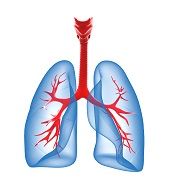Article
Pulmonary Embolism Surgery Safe, Effective
Author(s):
Treating acute pulmonary embolism patients with surgery to remove the clot fell out of favor in the 1950s because of high mortality rates. But safety seems to have improved dramatically-at least at one health care system. In a study published in the Texas Heart Institute Journal Alan Hartman, MD chair of cardiovascular and thoracic surgery at the North Shore-LIJ health system report on a retrospective review of 96 patients at the NY system.

Treating acute pulmonary embolism patients with surgery to remove the clot fell out of favor in the 1950s because of high mortality rates. But safety seems to have improved dramatically—at least at one health care system. In a study published in the Texas Heart Institute Journal Alan Hartman, MD chair of cardiovascular and thoracic surgery at the North Shore-LIJ health system report on a retrospective review of 96 patients at the NY system.
According to Hartman, the review showed that with “experience, surgical ability and careful patient selection” removing these clots surgically was overwhelmingly successful.
Though using clot-busting drugs works for most pulmonary embolism patients, some are not candidates for that therapy, for instance when they have moderate-to-severe right ventricular function or arrive at the hospital in shock. Without surgery these patients are likely to die.
All the North Shore-LIJ patients studied had either a large clot in the main pulmonary arteries or a saddle embolism, a clot blocking the bifurcation of the main pulmonary artery.
All made it to surgery within an hour of the embolism.
The system’s data showed the mortality rate was only 4.2%, compared to the 32% rate seen in the earlier studies.
The 96 patients cases occurred over a 9-year period and were all reported to the New York State Cardiac Surgery Reporting System and the Society of Thoracic Surgeons. Of the 9 surgeons involved, 8 each had more than 15 years of surgical experience.
None of the patients had a history of chronic pulmonary thrombolytic disease or showed any evidence of chronic disease on a CT scan.
The surgeries were done through cardiopulmonary bypass and without aortic cross-clamping. That avoided creating myocardial ischemia.
The pulmonary arteriotomy and clot extraction were done under direct vision, Hartman said, which he believes was a key factor in getting a successful outcome.
The analysis further showed that the patients who did best had significant RV dysfunction, but normal blood pressure. Patients with low blood pressure had a 30-day mortality rate of 12.5% compared to a rate of 1.4% in those with normal pressure. The low-blood-pressure group also had longer hospital stays (13.4 days) that those with normal pressure (9.1 days).




